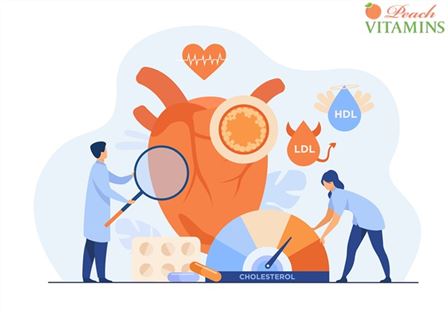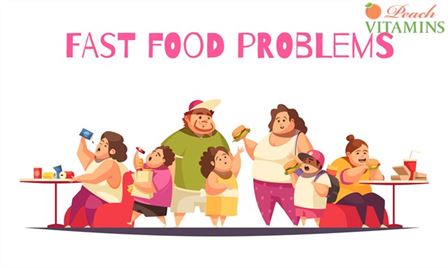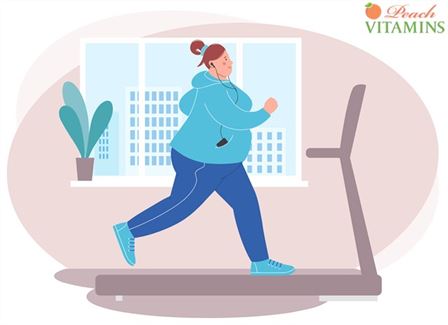When was the last time you lost visceral fat? Have you ever heard of “visceral fat” before? Well, now you’re going to learn what it is and why it’s important.
We all know that when we eat too much junk food, our waistlines grow larger. However did you know that there is another type of fat that grows inside your body? That’s right; it’s called visceral fat.
Visceral fat differs from subcutaneous fat because it lives deep within the abdominal cavity. Subcutaneous fat sits just under the skin, while visceral fat lies deeper inside the abdomen.
Take measures to protect yourself from chronic inflammation.
Chronic inflammation is one of the leading causes of many diseases including heart disease, obesity, and diabetes. They have shown that people who eat a lot of processed foods have higher levels of inflammatory markers than those who eat healthier diets. This means that if you want to protect yourself against chronic inflammation, avoid eating too many processed food products.
The risk of inflammation also increases with age. As we get older, our bodies become less efficient at producing anti-inflammatory compounds. So, besides avoiding processed foods, make sure you include plenty of fruits and vegetables in your diet.
If you calculate total body fat and then take 10 percent of it, you can estimate the amount of visceral fat. (healthline.com)
Visceral Fat Is Problematic
Visceral fat is located deep inside your abdomen, where it surrounds your internal organs.
Health risks associated with excess visceral fat include:
• Increased risk for developing heart disease
• High cholesterol level
• Type 2 diabetes
• Hypertension
• Stroke
• Metabolic syndrome
• Cancer
How Does Visceral Fat Work?
There are two types of fat cells: white adipose tissue (WAT) and brown adipose tissue (BAT). WAT is found throughout the human body, but BAT is only present in small amounts. The primary function of BAT is to produce heat by burning fuel molecules.
Because BAT has a limited capacity, it cannot store large amounts of fats. Therefore, when the body produces more calories than needed, it stores the extra calories as fat.
What Shrinks Visceral Fat?
In one study by researchers, people who drank green tea twice daily for six weeks lost nearly twenty pounds more than those who didn’t drink it. Another study found that drinking green tea could reduce LDL (bad) cholesterol by 7 percent after just four days.
A balanced diet rich in whole grains, fruits, and vegetables can also be effective in reducing visceral fat.
Harvard University note around 10% of our total fat is likely to be stored as visceral fat, therefore if you are carrying higher amounts of body fat than is recommended, it is therefore more likely that you are also storing more visceral fat than is healthy. (diabetes.co.uk)
Best Way To Lose Visceral Fat – Trans fats are bad for you.
The American Heart Association recommends eating less than seven percent of calories from trans fats. This means if you eat 2,000 calories per day, consume 200 grams of trans fat (or 8 teaspoons). That’s equivalent to one tablespoon of oil spread daily.
A trans fat diet is very low in nutrients like fiber and essential vitamins and minerals. Because of this, it can lead to increased belly fat and other health issues.
Trans fats are used to harden shortening or margarine so that it stays soft longer. However, research shows that consuming trans fats increases the amount of abdominal fat in humans.
Your Stress Level is Way Too High
Stress is a huge factor in our lives today. It affects us physically, mentally, emotionally, and spiritually. It released the stress hormone cortisol during times of stress. Cortisol helps protect against infection by increasing immune function and fighting off bacteria. However, too much cortisol can lead to increased belly fat and higher cholesterol levels.
• Exercise regularly
• Take time out to relax
• Meditate
• Practice yoga
• Spend time with friends and family
• Get enough sleep
• Avoid alcohol and drugs
• Eat healthy foods
If you don’t know what your current stress level is, take the test below. You’ll find out whether you’re under, over, or just right!
Is Your Alcohol Intake too High?
Sugar-sweetened beverages along with alcoholic drinks contribute to abdominal obesity, according to studies. They are linked to weight gain and may contribute to metabolic disorders.
Drinking soda pop every day can add about a pound to your waistline each year. Reducing your consumption of sugary drinks will help you achieve a slimmer figure.
Chronic conditions like depression and anxiety can make you feel tired all the time. You may not realize that they have contributed to your weight gain until you discover the root cause.
When you suffer from chronic conditions, you need to address them first before you lose weight. The following tips can help you do so:
• Talk to your doctor about any medications you are taking
• Ask him/her about treatment options
• Find support groups
• Consider seeing a therapist
You’ve Got Too Much of the Wrong Gut Bacteria
The gut microbiome plays a critical role in our overall health. It helps us digest food, synthesize vitamins, regulate hormones, and produce neurotransmitters. In addition, the gut microbiome influences our immune system, mood, behavior, and cognitive function.
The wrong portion sizes and types of foods we eat can alter the composition of the gut microbiome. These changes can result in bloating, constipation, diarrhea, gas, indigestion, and acid reflux, among others.
The good news is there are things you can do to improve your gut microbiome. Here are some suggestions:
• Reduce refined sugar intake
• Increase probiotic supplementation
• Consume more prebiotic fibers
• Drink plenty of water
• Limit processed meats and other red meat
• Make sure you consume adequate fiber
• Choose whole grains over white breads and pastas
• Seek out fermented foods (such as sauerkraut)
• Eliminate artificial sweeteners
Why Is It Hard To Lose Visceral Fat?
It is hard to lose visceral fat because it lies deep within the body. This layer of fat surrounds vital organs like the kidneys, liver, pancreas, spleen, stomach, intestines, and reproductive organs.
Visceral fat also has a negative impact on metabolism. When you have excess visceral fat, your body produces less energy for everyday functions. As a result, you tend to be hungry even when you aren’t eating.
Abdominal fat storage happens when your body makes more than normal amounts of insulin. Insulin is a hormone that regulates how much glucose enters cells. Glucose is a simple sugar found in fruits, vegetables, milk, and many other foods.
Insulin is made by the pancreas and secreted into the bloodstream. Insulin helps control the amount of glucose circulating in the body.
However, if you have insulin resistance, your body becomes resistant to insulin’s ability to lower blood sugar levels. This results in elevated blood sugar levels and leads to increased accumulation of visceral fat.
How Does Visceral Fat Leave The Body?
Visceral fat leaves the body through the digestive system. It’s stored in the liver, pancreas, kidneys, and muscles. We metabolize differently this fat than subcutaneous fat. For example, it produces higher levels of triglycerides (fat) and lower levels of HDL cholesterol (good cholesterol).
The best way to reduce visceral fat is by following a healthy lifestyle. A study published in the journal Metabolism found that people who followed a high-fiber, researchers found that walking 30 minutes three times per week was just as effective as running three miles five days per week at burning off abdominal fat.
Why Exercise Is Important
Exercise is important because it helps burn calories, builds muscle mass, improves bone density, increases metabolism, and lowers stress levels. It also makes us feel better by increasing our energy levels and improving mood.
Aerobic exercises include activities like jogging, swimming, biking, dancing, hiking, and playing tennis. Strength training includes lifting weights, using weight machines, doing pushups, situps, pullups, squats, lunges, and yoga.
Regular exercise will help you achieve your fitness goals faster.
Cortisol levels and blood pressure are also lowered with regular physical activity.
You should aim to do aerobic exercises for 20 to 60 minutes every day. You can start with 10 minutes and work your way up to 30 minutes.
How Much Exercise Do I Need?
The amount of exercise you need depends on your age, gender, physical activity level, and whether you’ve had any recent surgery. For example, if you’re 50 years old and haven’t exercised regularly in the past year, start by walking briskly for 20 minutes three times per week. As you build up your fitness levels, you can increase the intensity of your workouts.
A healthy weight loss plan should include exercise.
Exercise helps burn calories and build muscle mass. Muscle burns more calories than fat. So eating fewer calories will not only help you shed pounds but also keep you fit and healthy. Exercise boosts metabolism and helps you maintain a healthy weight. It also improves cardiovascular function, mental wellbeing, and bone density.
Conclusion
If you are looking for ways to lose visceral fat, then you need to start by changing your lifestyle. Start exercising regularly. Your abdominal muscles and waist circumference will shrink over time.








